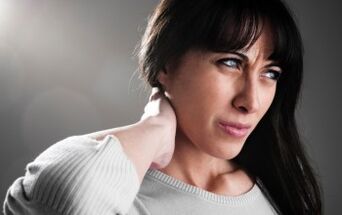
An inactive lifestyle, office work, lack of adequate physical activity and modern dietary preferences lead to the spread of a large number of diseases that exist in our urban society.
Leadership among them is entitled to be occupied by cervical osteochondrosis.
And all because of the weak muscular corset and the fact that these 7 discs have more mobility than any other part of the spine receives constant physical activity in the form of the need to constantly keep the head in the desired position, tilted and dizzy.
The cause of the disease
Previously, osteochondrosis was considered an adult disease, and people who lived for more than 40 years experienced it. But every year the age threshold of the disease falls, and it "becomes younger", which leads to a tendency to the disease of young people aged 18-20 years.
The main reasons for the appearance of such pathology:
Postural violations in adolescence.Young people now do not want to monitor their posture, which leads to its violations.
Overweight.The appearance of excess weight increases the load on the spine.
Back curvature.The risk of osteochondrosis with back curvature is increased.
Back injury.Back injuries cause irreparable damage to any part of the spine.
Metabolic diseases.In the case of metabolic disorders, there is also a high probability of developing osteochondrosis.
Hard physical work.Excessive physical labor also leaves an irreversible impact on the health of the spine in general and on the cervical area in particular.
Low level of physical fitness.The level of physical fitness also affects the condition of the spine, and the lower it is, the weaker the spine.
Mistakes while doing complex exercises.Athletes may have problems with osteochondrosis during training with large errors in work.
Pressure.Modern human nervous tension and constant stress also cause disorders of the cervical vertebrae.
Sedentary lifestyle.An inactive or inactive lifestyle greatly affects the vertebrae.
Past illness.Osteochondrosis can develop after infection and hypothermia.
The disease is, in fact, due to muscle spasm, which does not allow the cervical vertebrae to move easily, worsens blood supply to tissues, while posture is disrupted, as a result of dystrophic processes in the vertebrae themselves, as well as in the intervertebral disc, begin to activate, causing narrowing of the intervertebral cavity andpinched nerve roots.
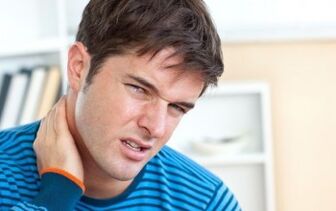
The main symptoms
The symptoms of cervical osteochondrosis are quite different from other parts of the spine.
The tighter fit of the vertebrae leads to the fact that even the most minimal change in one of them compresses or displaces any nerve or duct, as well as compresses the spinal cord.
Because of this violation of bodily functions can be recorded: disturbances in skin sensitivity, dizziness.
Clinical manifestation:
- Pain in the neck and shoulders, which also extends to the back of the head, ear and eye area, and does not subside even at night.
- Pain in the upper leg, which increases with energy.
- Decreased sensitivity of the upper limbs, weakness in the muscles, movement becomes difficult.
- In the morning, the neck muscles are tense, and the head becomes tight, it seems that the neck has "rested".
- Turning or tilting the head, painful sensation in the neck.
- From time to time, the limbs become numb, there is a burning sensation or tingling.
- Unpleasant throbbing pain periodically appears in the neck and nape of the neck.
- Violent head movements cause blurred vision, dizziness, or can cause fainting.
- Incidence of tinnitus.
- Decreased visual and hearing acuity.
- There is numbness of the tongue.
- There is heart disease that does not respond to trinitroglycerin, but its intensity changes due to changes in body position.
- Headaches occur in the occiput, crown and temples.
- In the cervical region, so -called "withering" arises, that is, connective tissue grows.
Signs of cervical osteochondrosis
Cervicalgia (pain and muscle tension in the neck)
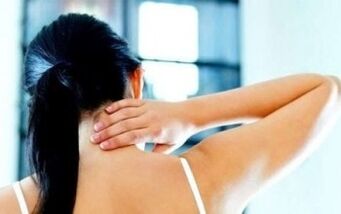
Cervicalgia is a pain syndrome in which pain and tension of the neck muscles are characteristic, the cervical area loses its mobility, dizziness may occur, visual clarity is impaired, autonomic dysfunction may appear.
The pain can be tingling, throbbing, and can even be "shooting".
It’s worth making even the slightest movement, sneezing or coughing - as soon as muscle tension is given by the pain.
There is also a problem with turning the head or tilting it to the side, when the patient has to do this with the whole body.
In addition, patients experience dizziness, occipital pain, tinnitus, numbness in the back of the head and numbness of the hands.
The reasons for this may be:
- Hypothermia.
- Uncomfortable head position during sleep.
- Sedentary work, which forces you to keep your head in an uncomfortable position for a long time.
- Physical activities that lead to muscle tension in the neck area, including sports training in the gym.
- Cervical spine injury.
- Tissue infection or tumor.
Pain in the back of the head, in the shoulders and arms, as well as pain when turning the head, indicate the presence of an early stage of a chronic disease, such as osteochondrosis.
Cervicocranialgia or posterior cervical symptoms (pain in the cervical-occipital region)
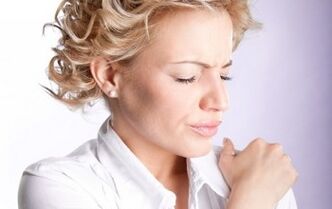
Cervicocranialgia is pain in the cervical-occipital region, the occurrence of which is closely related to injury to the cervical spine, degenerative lesions, or its inflammation.
Its distribution often reaches the frontotemporal lobes, shoulders and arms, and can even be unilateral. In this case, the parties have not changed.
The intensity of this pain is moderate, its intensity being observed with movement of the head, palpation of the cervical-occipital muscles, as well as with prolonged stay in an uncomfortable position for the head.
Usually, the cause of this pain can be either osteoarthritis or osteochondrosis of the cervical spine.
In this case, the pain can be pressing, shooting, or throbbing. Mild movements in the head, coughing, muscle tension can cause more severe pain.
The main complaints complained of by patients:
- Inability to turn and tilt the head, which is necessary to move the whole body.
- Numbness of the occipital area and hands.
- Noise in the ears.
- Dizziness.
- Pain in the occipital area, etc.
Cervicobrachialgia or brachiaglia syndrome
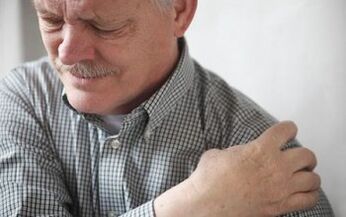
Cervicobrachialgia is detected by numbness of the hands, along with deep rupture and, often, stabbing pain in the hands or in the forearms, as well as a feeling of weakness in the upper limbs.
This usually happens at night.
The disease can develop reflexively, for the most part, those engaged in heavy physical labor, and 9 out of 10 are women, are affected by the disease.
In this case, vegetative-vascular, muscle-tonic and neurodystrophic manifestations can be observed.
For reflex syndrome, a very special feature is the presence of muscle-tonic reactions, such as muscle spasms.
Treatment
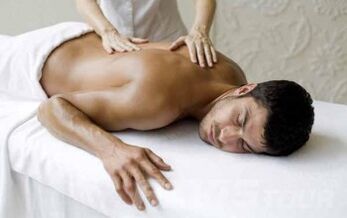
Treatment should be thorough.
At the same time, it is necessary to use both the principles of drug and non-drug treatment, not forgetting the possible prevention of disease.
By drug treatment, we mean the use of drugs that relieve pain and inflammation, as well as drugs that increase brain circulation.
If there is pathology in the form of muscle tension, then it is recommended to take relaxing drugs and vitamin-mineral complexes in therapeutic doses.
An important role in treatment is given to the method of physiotherapy:
- water procedures.
- Paraffin application.
- Electrophoresis.
- Magnetotherapy.
The widespread use of alternative therapies also helps to fight the disease. But, despite everything, therapeutic training remains the most effective method of treatment.
prevention
In order for all the problems associated with osteochondrosis to bypass you, you need to keep in mind all the reasons that drive the appearance of the disease.
Since the main reason is an inactive lifestyle, don’t forget about morning exercises and walks, and make sure you include exercises with neck muscles in your daily gymnastics. And don’t forget that circular movements of the head can cause neck injuries, so you can’t put it into exercise.
And also do not forget that preventive examination of school-age children by an orthopedic specialist is mandatory.
Form a strong muscular corset, exercise.
Eat foods that can replenish the body with minerals such as calcium and magnesium, vitamins.



















